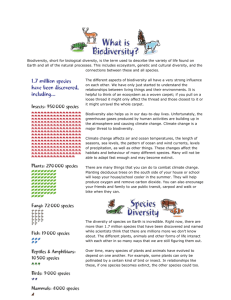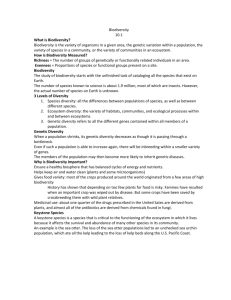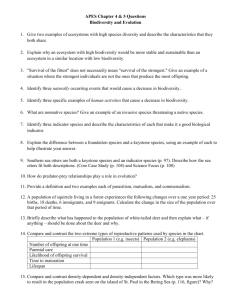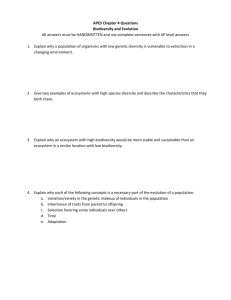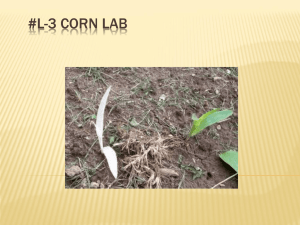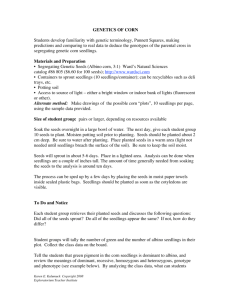Genetic Biodiversity Lab
advertisement
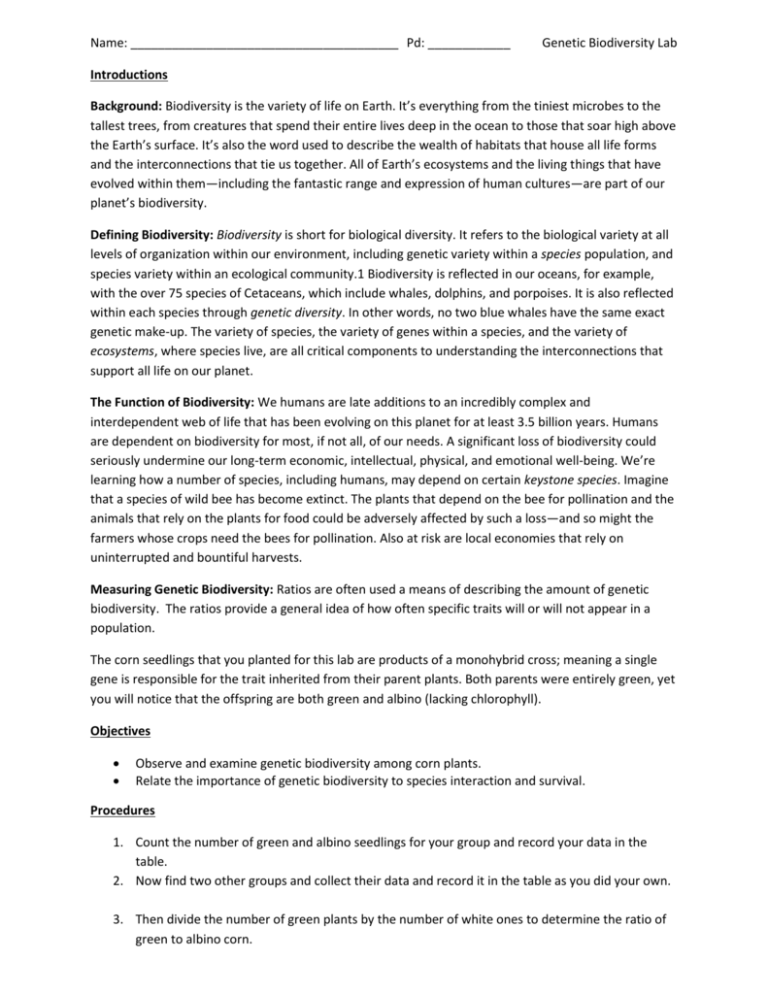
Name: _______________________________________ Pd: ____________ Genetic Biodiversity Lab Introductions Background: Biodiversity is the variety of life on Earth. It’s everything from the tiniest microbes to the tallest trees, from creatures that spend their entire lives deep in the ocean to those that soar high above the Earth’s surface. It’s also the word used to describe the wealth of habitats that house all life forms and the interconnections that tie us together. All of Earth’s ecosystems and the living things that have evolved within them—including the fantastic range and expression of human cultures—are part of our planet’s biodiversity. Defining Biodiversity: Biodiversity is short for biological diversity. It refers to the biological variety at all levels of organization within our environment, including genetic variety within a species population, and species variety within an ecological community.1 Biodiversity is reflected in our oceans, for example, with the over 75 species of Cetaceans, which include whales, dolphins, and porpoises. It is also reflected within each species through genetic diversity. In other words, no two blue whales have the same exact genetic make-up. The variety of species, the variety of genes within a species, and the variety of ecosystems, where species live, are all critical components to understanding the interconnections that support all life on our planet. The Function of Biodiversity: We humans are late additions to an incredibly complex and interdependent web of life that has been evolving on this planet for at least 3.5 billion years. Humans are dependent on biodiversity for most, if not all, of our needs. A significant loss of biodiversity could seriously undermine our long-term economic, intellectual, physical, and emotional well-being. We’re learning how a number of species, including humans, may depend on certain keystone species. Imagine that a species of wild bee has become extinct. The plants that depend on the bee for pollination and the animals that rely on the plants for food could be adversely affected by such a loss—and so might the farmers whose crops need the bees for pollination. Also at risk are local economies that rely on uninterrupted and bountiful harvests. Measuring Genetic Biodiversity: Ratios are often used a means of describing the amount of genetic biodiversity. The ratios provide a general idea of how often specific traits will or will not appear in a population. The corn seedlings that you planted for this lab are products of a monohybrid cross; meaning a single gene is responsible for the trait inherited from their parent plants. Both parents were entirely green, yet you will notice that the offspring are both green and albino (lacking chlorophyll). Objectives Observe and examine genetic biodiversity among corn plants. Relate the importance of genetic biodiversity to species interaction and survival. Procedures 1. Count the number of green and albino seedlings for your group and record your data in the table. 2. Now find two other groups and collect their data and record it in the table as you did your own. 3. Then divide the number of green plants by the number of white ones to determine the ratio of green to albino corn. Data Table Plant Group # Number Green Seedlings Number of Albino Seedlings Ratio of Green:Albino # # # Total: Determining Possible heredity: Punitt Squares Fill in the punitt squares by combining the above the square in the top column and the letter in the left column of the same row. These letters represent the genotype for the parents (genetic code for a specific trait). When the entire punitt square as been completed write the ratio of green to albino corn plants. (C) represents green plants and is the dominate trait. (c) represents albino plants and is the recessive trait. Ratio: Ratio: C C C C C C c Ratio: c Ratio: c c C c c c c C In your answers below, use (C) to represent the gene that codes for the formation of Chlorophyll (green corn plants). Use (c) for the gene that lacks coding for the formation of chlorophyll (albino corn plants). 1. Given the overall ratio of green to albino offspring in the 1st generation, what were the genotypes of the two green parents? 2. What is the genotype(s) of the green 1st offspring? 3. What is the genotype(s) of the albino 1st offspring? 4. If ratios differ from block to block, why is this? 5. Consider the total ratio from the observed data. What would it be theoretically? 6. Does the theoretical ratio differ from actual ratio? Why? 7. Do ratios differ from block to block and to the total? Why? 8. What can you predict about the progeny (2nd generation) of the albinos?

